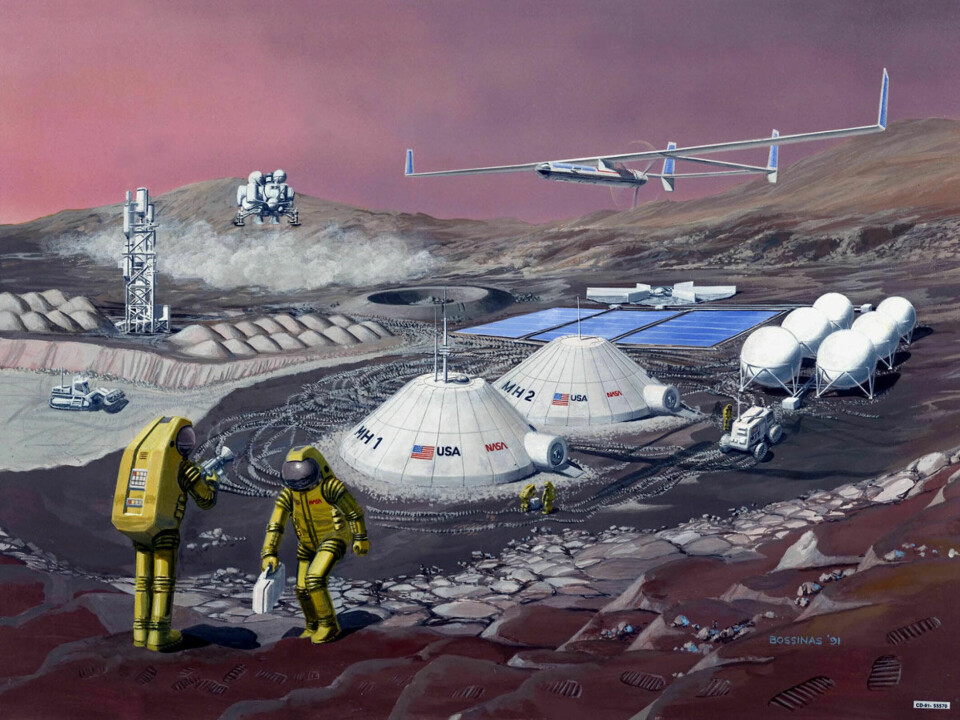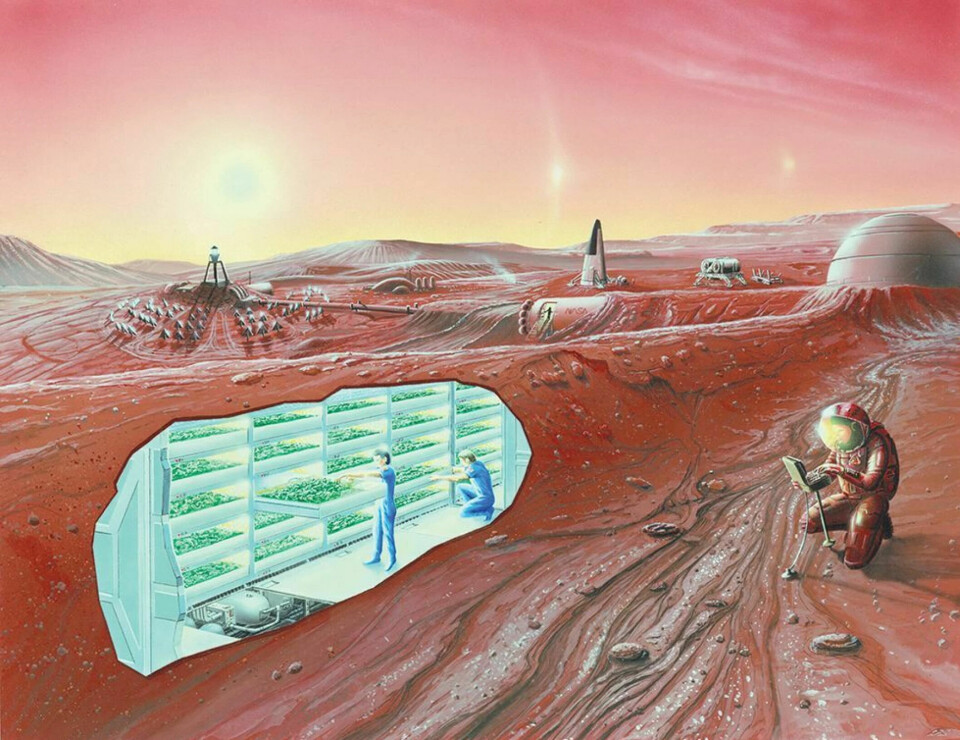
If your best friend moves to Mars, how difficult would it be to talk to each other?
Light travels fast. But things don't move very fast when it comes to having conversations with people on other planets.
We often take for granted that we can communicate with anyone on Earth almost as if they were in another room in our house.
We can talk to someone on the other side of the world without any delays. We send a message via SMS, WhatsApp or Snapchat, and the message is delivered and can be read instantly.
Or, it feels like it's delivered instantly, but it’s not.
Your text or voice is sent as an electrical signal at a speed close to the speed of light. It takes a tiny amount of time, but it’s so fast that it feels like it happens immediately.
One billion kilometres an hour
Light is the fastest thing scientists know of. It moves so quickly that there may not be anything faster.
Several researchers call it the "speed limit of the universe".
So how fast is light? Very fast. 299,792 kilometres per second, when it travels through space where there is no air. It passes a little slower through other things, like water or air.

In other words, light travels approximately that distance every single second. This adds up to over one billion kilometres per hour.
For a beam of light traveling at such a speed, the Earth is actually very small.
If you could send a beam of light directly from Oslo to Auckland in New Zealand, almost on the other side of the Earth, the light would travel just over 17,000 kilometres.
This huge distance takes more than 21 hours by plane. But light manages it in a matter of a few hundredths of a second.
Messages sent at the speed of light
A message or the sound of a phone call is sent as a digital signal, which also travels at the speed of light from one mobile phone to another.
But the message has to go through antennas, cables, and other computers on the journey.
Therefore, the message takes a little longer, but it still happens so fast that it almost feels like it happens instantly.
But it’s a whole different story when it comes to talking to people on other planets. Our closest planetary neighbour is called Mars.
Best friend on Mars
Will humans ever live on Mars? That’s something many people wonder about.
In any case, it won’t be easy for humans to live on Mars. Mars has much lower gravity than Earth. It’s not healthy for our muscles and skeleton to live in lower gravity.
Mars also has an atmosphere with little oxygen, and which does not offer proper protection against dangerous radiation from space.

So all of this needs to be addressed before humans can actually live there. But if people actually lived on Mars, and your best friend moved there, it would quickly become difficult to communicate.
Even though light travels very fast, the universe is incredibly vast. Even between the planets in the solar system, the distances are quite long.
As a result, light takes some time to travel there. This would make it difficult to have a normal conversation.
At least 80 million kilometres to Mars
Mars and Earth orbit the sun in separate paths. When the planets were at their closest in 2022, they were about 80 million kilometres apart, according to space.com.
So, if you were to talk to your best friend who recently moved to an exciting but perhaps a little lonely life on Mars, it would take quite a long time to communicate with each other.

A message traveling at the speed of light would take four and a half minutes to arrive. And that's when the planets are at their closest.
When the distance is more typical, there is a whopping 225 million kilometres between the planets, according to space.com.
In that case, a message would take up to 13 minutes to reach Mars!
You would have to wait half an hour to get a response
To send a message, such as “Hello!”, it would take at least 13 minutes for the message to arrive. Then your best friend on Mars would reply to your message, and it would take at least 13 minutes before you receive the response.
Therefore, it would take up to half an hour to send a message and get a reply. This would make it very difficult to have a conversation and quite different from what we are used to now.
A phone call would be very tedious since you would have to wait half an hour to hear the answer to your question.
What about planets that are farther away?
And this is just our closest planetary neighbour. If your best friend travelled even farther away, perhaps all the way to the moon Enceladus, it would take a really long time.
The moon orbits the giant planet Saturn, towards the outer edge of our solar system.
The distance here is a staggering one and a half billion kilometres. As a result, it would take over three hours to send a message and receive a response.
But this is relatively short compared to Voyager 1. This space probe was launched from Earth almost 46 years ago and is now far beyond our solar system.
When NASA tries to send a signal to check on Voyager 1, it takes more than two days to receive a response, according to NASA. It is now over 23 billion kilometres away.
And now we have only just ventured outside our solar system. Even within the solar system, the distances are so vast that even light travels slowly.
———
Translated by Alette Bjordal Gjellesvik.
Read the Norwegian version of this article on ung.forskning.no
------






































